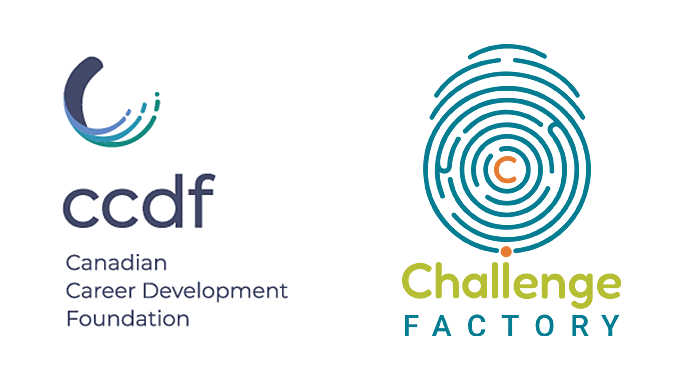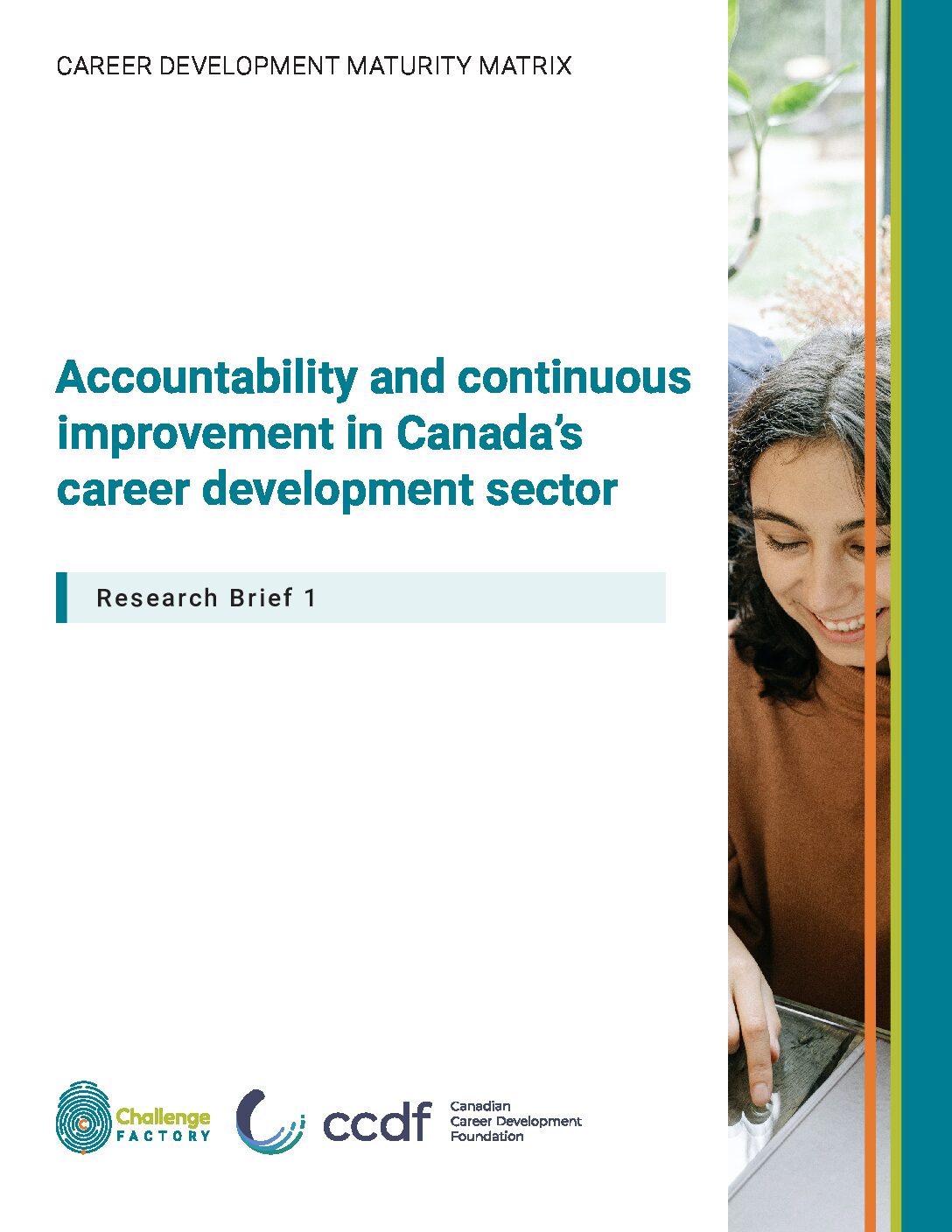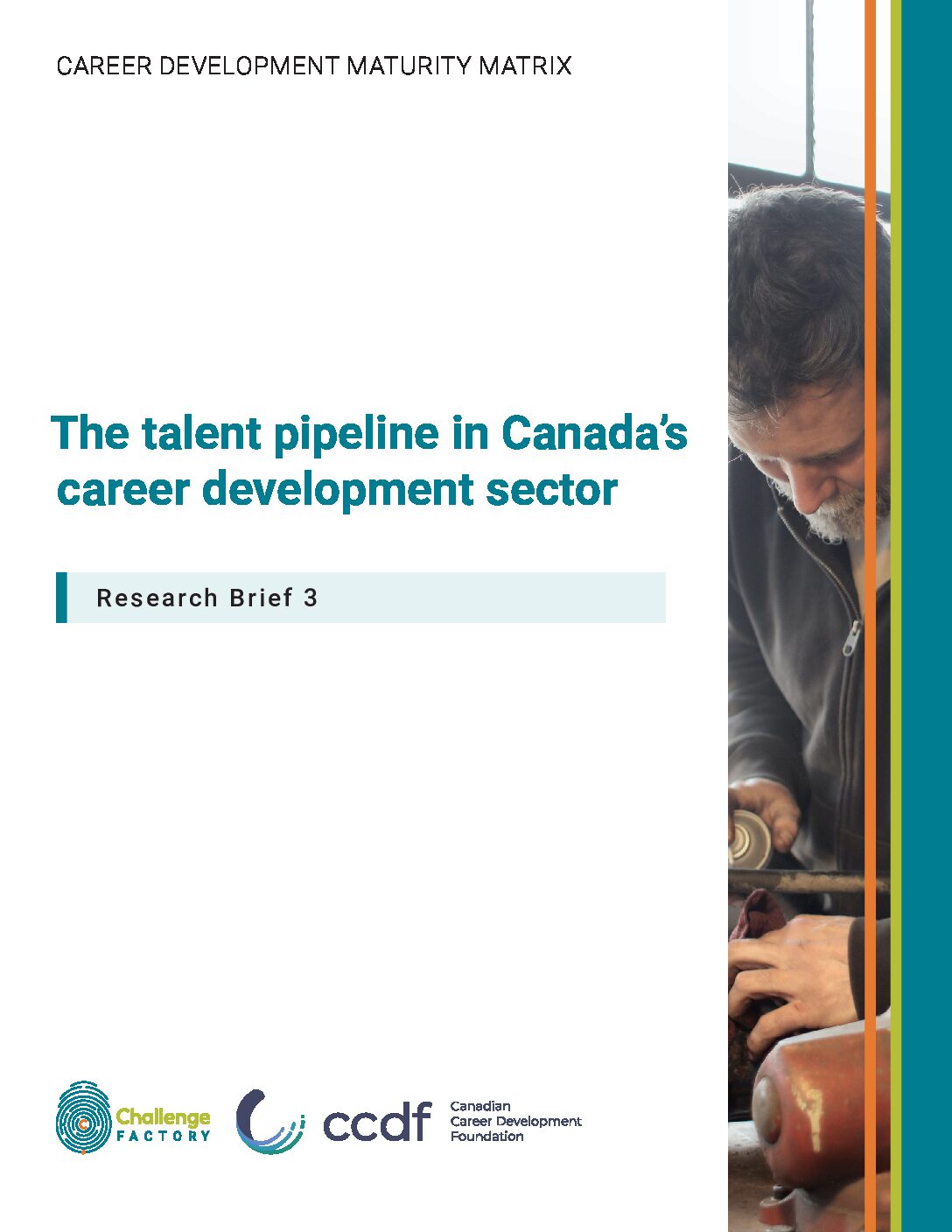Career Development Maturity Matrix™
A powerful tool for advancing the career development sector
What is the Career Development Maturity Matrix?
Every home needs a structurally sound foundation. The same is true for industry sectors.
What are the foundational elements that need to be in place for the career development sector to be solid for the years to come? Does the Canadian sector have structural integrity? Are there minor cracks in its foundation, or more serious weaknesses that need urgent attention?
The Career Development Maturity Matrix™ is a benchmarking tool designed to spark strategic conversation about the foundational elements that the career development sector needs for its structural integrity and advancement in the years to come. Created by Challenge Factory and the Canadian Career Development Foundation (CCDF), the Maturity Matrix identifies and measures the maturity of four sector benchmarks: quality, capacity, cohesion, and access. Each benchmark has 3-5 indicators.

Benchmark 1
Indicators
- Service Delivery Standards
- Client-Centered Services
- Demand-Responsive Services
- Accountability and Continuous Improvement
Benchmark 2
Indicators
- Professional Standards
- Training and Professional Development
- Talent Pipeline
- Research and Innovation
Benchmark 3
Indicators
- Professional Identity
- Awareness
- Influence
Benchmark 4
Indicators
- Citizen Rights
- Targeted Services
- Visibility
- Technology
- Diversity, Equity, and Inclusion
Quality
Service Delivery Standards
Services are delivered in accordance with clearly articulated standards that reflect rigor and accountability, respect for and responsiveness to the client, and a deep commitment to equity and inclusion.
Client-Centered Services
Services/referrals are tailored to clients’ initial and evolving needs, as assessed using rigorous employability assessment tools/methods for clients.
Demand-Responsive Services
Services/referrals reflect the current and evolving needs of employers and industry sectors.
Accountability and Continuous Improvement
Meaningful indicators of client change are used to assess the impact of services. Results are shared publicly and used to inform evolving policy and practice.
Capacity
Professional Standards
Career development professionals are certified based on clearly articulated competency standards for effective and ethical practice.
Training and Professional Development
Career development professionals complete robust training and professional development aligned with professional standards at entry, professional, and leadership levels.
Talent Pipeline
The career development profession has a strong pipeline of new entrants, professionals, and leaders that reflect the diversity of clients served.
Research and Innovation
The career development sector is informed by rigorous research and innovative theories, tools, and approaches.
Cohesion
Professional Identity
Career development professionals see themselves as part of a strong, unified, and vibrant profession.
Awareness
The public understands and sees the value of career development.
Influence
The career development sector informs public opinion, the media, and government policy/programming in diverse areas, including employment/labour market issues, education, health, and socioeconomic well-being.
Access
Citizen Rights
Entitlement to quality career services across the lifespan for all Canadians is protected in legislation.
Targeted Services
Underrepresented and marginalized groups have access to tailored and enhanced services.
Visibility
The public knows where and how to access quality career services locally.
Technology
Access to quality service is enhanced by technology-enabled delivery.
Diversity, Equity, and Inclusion (DEI)
The career development sector and its services operate based on comprehensive and current DEI policy and practices.
How can the Career Development Maturity Matrix be used?
The Maturity Matrix can be used by sector leaders, interest holders, and policymakers to map the current state of the sector and set ambitious goals for the future. For example, significant investment is being made into programs and policies designed to facilitate career transitions for Canadian adults. The Maturity Matrix is an essential tool to ensure there can be strong return on these investments.
In a pilot study, CCDF and Challenge Factory tested the Maturity Matrix’s use-value. We asked experts and leaders in Canada’s career development sector to rank each indicator across the Maturity Matrix’s four benchmarks on a scale of 1-5 for its importance to the structural integrity of the sector and its maturity within the Canadian sector.
This helps us determine:
- how important each Maturity Matrix benchmark is to the sector’s structural integrity; and,
- how Canada measures up against each benchmark.
This application of the Maturity Matrix contributes to our evidence base and understanding of the Canadian sector’s core strengths, foundational gaps, areas of future opportunity, and areas of over-investment. This study can be conducted for career development sectors around the world to create international comparatives and a rich frame to inform policy and practice across jurisdictions.
Research briefs: Explore pilot study findings and insights for the career development sector, policymakers, and Canadians.

Research Brief 1
Accountability and continuous improvement in Canada’s career development sector

Research Brief 2
Public awareness and policy setting in Canada’s career development sector

Research Brief 3
The talent pipeline in Canada’s career development sector

Research Brief 4
Access to career development in Canada

Why do we need a Career Development Maturity Matrix in Canada?
Canada’s career development sector enjoys an enviable international reputation. While attending the 2019 International Centre for Career Development and Public Policy (ICCDPP) Symposium in Norway, Sareena Hopkins from CCDF and Lisa Taylor from Challenge Factory were struck by how often other countries referred positively to a Canadian event, resource, or expert.
As is often the case, outside perspectives provided a moment of reflection. Are we as strong as we’re perceived to be? How does Canada compare to other jurisdictions? How should we define what “strong” or “good” looks like for the career development sector?
A year later, COVID-19 upended labour and employment across Canada. Since then, we’ve all been adapting to new conditions, challenges, and opportunities across our labour markets, education systems, and employment landscapes. A strong career development sector is more important and urgent than ever, as Canadians face unprecedented struggles in the world of work, with both immediate and long-lasting impacts.
We needed a way to begin to answer the questions sparked at the ICCDPP Symposium. Today, we continue to need new tools and approaches for advancing career development in Canada and around the world. The Career Development Maturity Matrix is a foundational tool that can support this work.
Learn more
Careering magazine: “Improving access to career supports is essential to Canadian sector’s maturity”
Sector research: “Mapping Canada’s career development sector”
Interested in using the Career Development Maturity Matrix? Contact us at Consulting@ChallengeFactory.ca.

